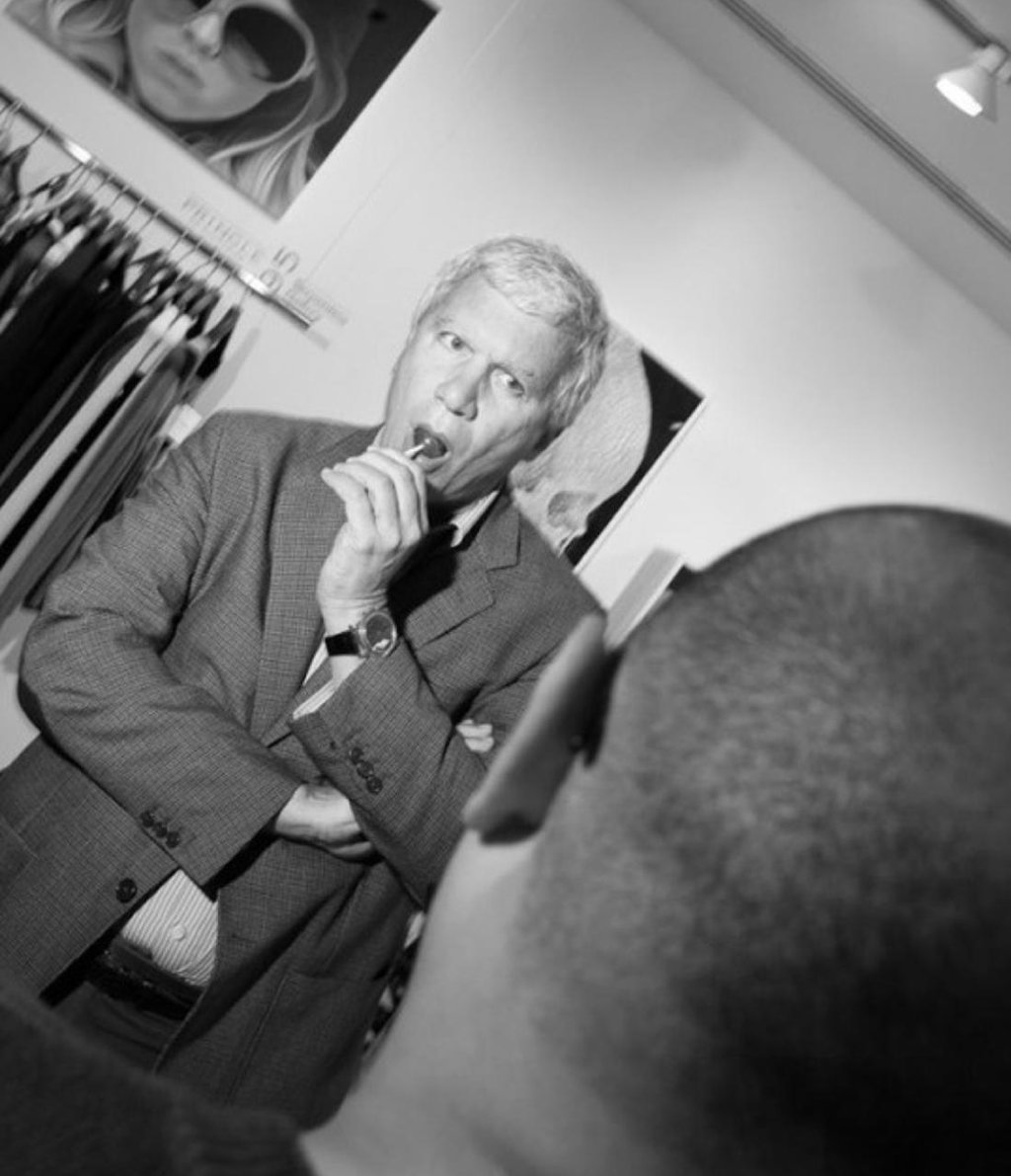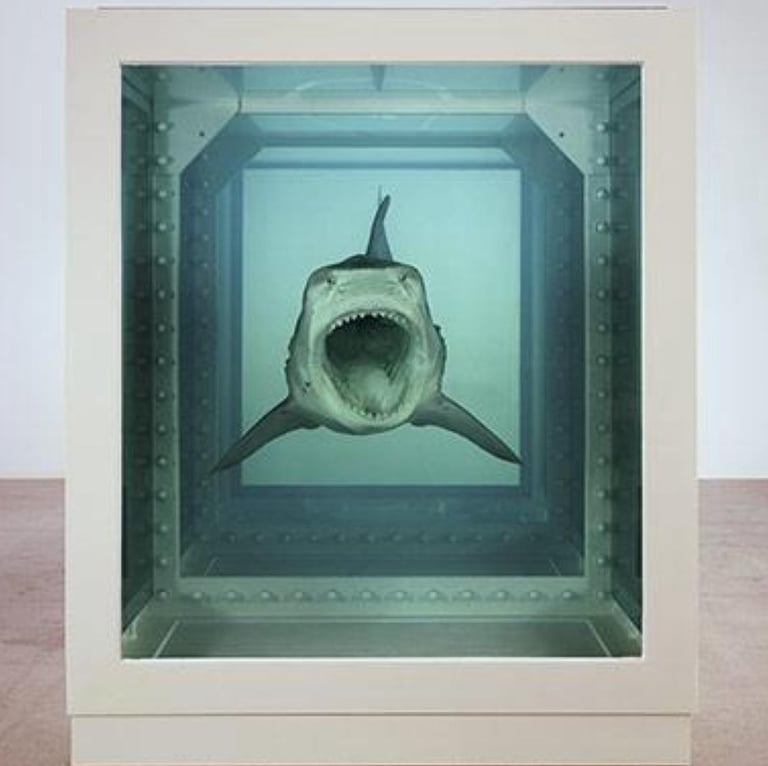Larry Gagosian, Collector of the Impossible
A name that has rewritten the rules of contemporary art. This article delves into the more intimate and strategic side of Larry Gagosian, legendary figure of the global art world, through his role as a visionary collector and his enduring, complex relationship with Damien Hirst. From the iconic $12 million shark to globe-spanning exhibitions, the piece reveals lesser-known stories, sharp insights, and reflections on collecting as an act of visual power, cultural responsibility, and subtle play between permanence and provocation. A multifaceted portrait that illuminates not just the man and the market, but the construction of an idea of art as a space to inhabit, curate, and be transformed by.
COLLECTORS OF MEANING: WHEN ART BECOMES A RESPONSIBILITY
Charlotte Madeleine CASTELLI
7/14/20254 min read


Power, Vision, and his enduring bond with Damien Hirst
Within the contemporary art world, few names resonate with the same mythic power as Larry Gagosian. A central figure since the 1980s, Gagosian has redefined the role of the gallerist: not merely as a dealer or impresario, but as a cultural strategist, global tastemaker, and above all, a collector of radical vision. What is less known, but profoundly illuminating, is the private, reflective dimension of his collecting practice: a practice that reveals itself as a curatorial gesture, a philosophical inquiry, and a deep form of aesthetic intimacy.
Among the many artist relationships that have shaped Gagosian’s trajectory, his longstanding bond with Damien Hirst stands out. Not simply a business alliance, theirs is a partnership that bridges provocation and trust, spectacle and permanence—marking a pivotal chapter in the history of art, value, and visibility.
For Gagosian, collecting is never a passive acquisition. It is an act of care, of cohabitation, of silent dialogue with the artwork. Those close to him recount how, in his private residences, he speaks to works as if they were living presences—contemplating their placement, conversing with their aura. It may sound anecdotal, even eccentric, but it speaks to the reverence he holds for the object as a living node of meaning.
His approach includes keeping a portion of his collection, including iconic pieces by Hirst, away from public view and outside the speculative market. These “secret collections” reflect not only discretion but a sense of stewardship—the belief that artworks hold power beyond price, and that part of collecting is to protect that power from dilution.
Alongside this, Gagosian has an explorer’s eye. He is drawn not just to canonical works but to overlooked pieces, emerging voices, and peripheral productions that may one day shift the narrative. To collect, for Gagosian, is to listen ahead of the present.
The Gagosian–Hirst relationship transcends traditional art world dynamics. It is built on a shared appetite for audacity, for transformation, and for disrupting both the visual and economic norms of contemporary art. Hirst, obsessed with death, seriality, and spectacle, found in Gagosian a champion with the infrastructure and vision to support his meteoric rise.
Their most iconic moment—now the stuff of legend—came with the 2004 sale of The Physical Impossibility of Death in the Mind of Someone Living (1991), better known as the “$12 million shark”. Originally commissioned by Charles Saatchi, this work, a 14-foot tiger shark suspended in formaldehyde, was orchestrated into the private collection of hedge fund billionaire Steven A. Cohen under Gagosian’s deft guidance.
The sale did more than set a price: it shifted the cultural axis. The shark became not just a work of art, but a monument to a new kind of collecting, where symbolism, spectacle, and status fused into a single, iconic object.
This move was emblematic of Gagosian’s ability not just to sell, but to shape meaning. As he once famously said:
“It’s all about visual power. You walk into a room and the art either takes the space or it doesn’t. That’s the first test. Everything else is secondary.”
And what greater test of visual power than Hirst’s shark—frozen, sublime, terrifying in its stillness?
In 2008, Hirst shocked the art world by bypassing galleries altogether and selling directly through Sotheby’s in his historic auction Beautiful Inside My Head Forever. Many speculated this would rupture his relationship with Gagosian. But just a few years later, Gagosian welcomed Hirst back with a monumental exhibition: The Complete Spot Paintings 1986–2011, staged simultaneously across eleven Gagosian locations worldwide.
It was not just a reconciliation. It was a statement of magnitude. Gagosian offered Hirst not a single white cube but a planetary stage—affirming not only his value as an artist but the collector’s own role as global curator and orchestrator of narrative.
Their relationship, seasoned with trust, irony, and mutual ambition, includes its share of dry wit. During an installation in Beverly Hills, Hirst quipped, “You’ve become my favorite living installation.” Gagosian, smiling, replied: “And you’re my most metaphysical investment.”
Gagosian’s presence at auctions is often veiled. He frequently uses intermediaries to avoid influencing pricing with his name alone. In one notable case, he acquired a major Hirst sculpture without anyone realizing he was the buyer until long after the sale had closed. This discretion is not caution—it is strategy, an awareness that power, when quiet, moves deeper.
Yet collecting is also a game he plays with elegance. He sees it as intellectual sport, a test of patience and foresight. His “friendly rivalries” with fellow collectors are less about ownership and more about narrative possession: who gets to shape the discourse, who gets to hold the emblem of an era.
Larry Gagosian is not merely a gallerist. He is a cultural architect, a collector of ideas, provocations, and historical pivots. His bond with Damien Hirst reflects something more than alliance: it is a case study in how power and concept, market and meaning, can coexist—and even elevate each other.
To collect, in Gagosian’s world, is not to accumulate. It is to transform space into vision, and vision into memory. It is to hold the unholdable, to stage the impossible, to live in dialogue with the future of art.
And so, while the shark may float in its formaldehyde eternity, the true force behind it is the mind that believed in its permanence—the collector who knew that the impossible is not to be feared, but framed.
© Charlotte Madeleine Castelli | All rights reserved


